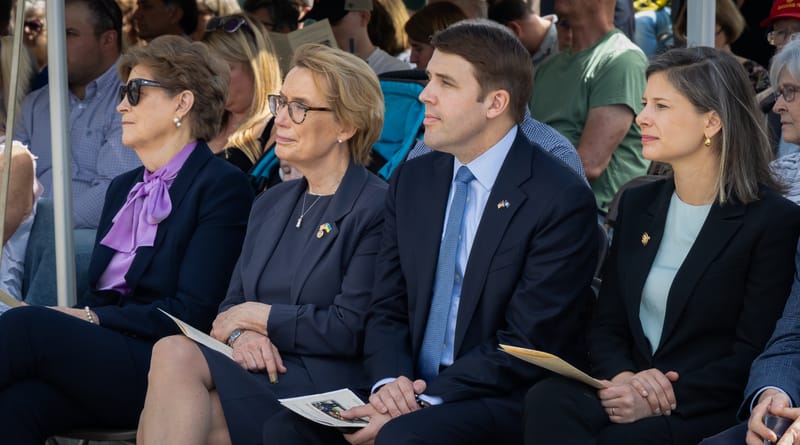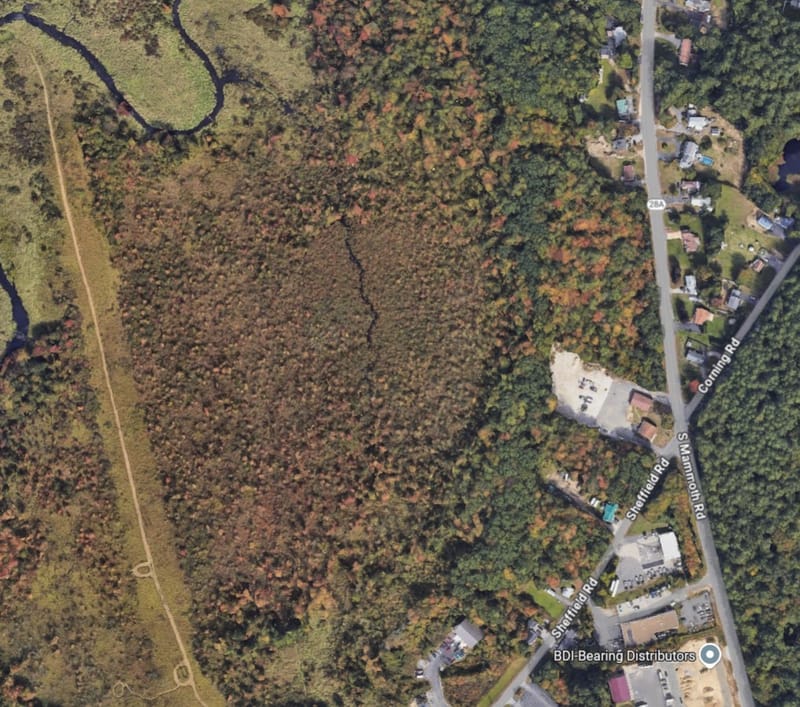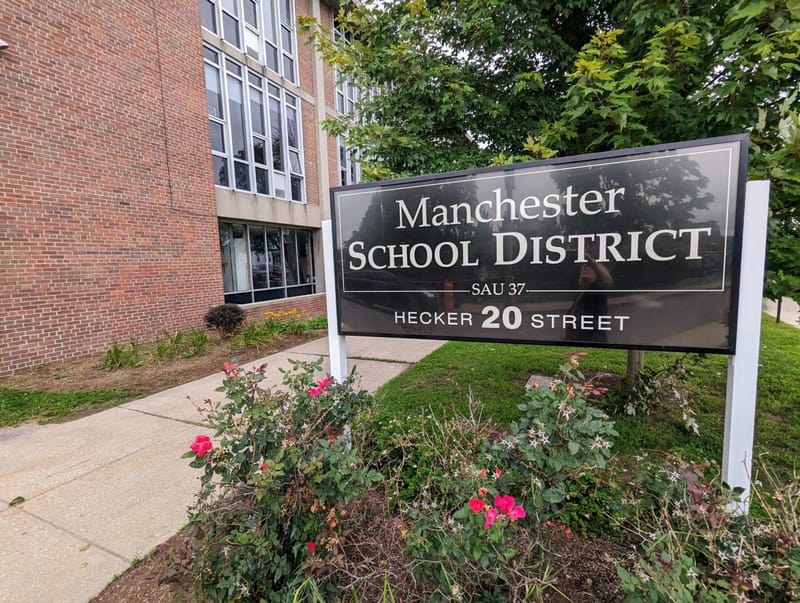Opening statements highlight challenges for both sides in case against Logan Clegg
Both sides say that the mountain of circumstantial evidence compiled by the Concord Police Department during the six months between when the Reids were killed and when Clegg was arrested supports their case.
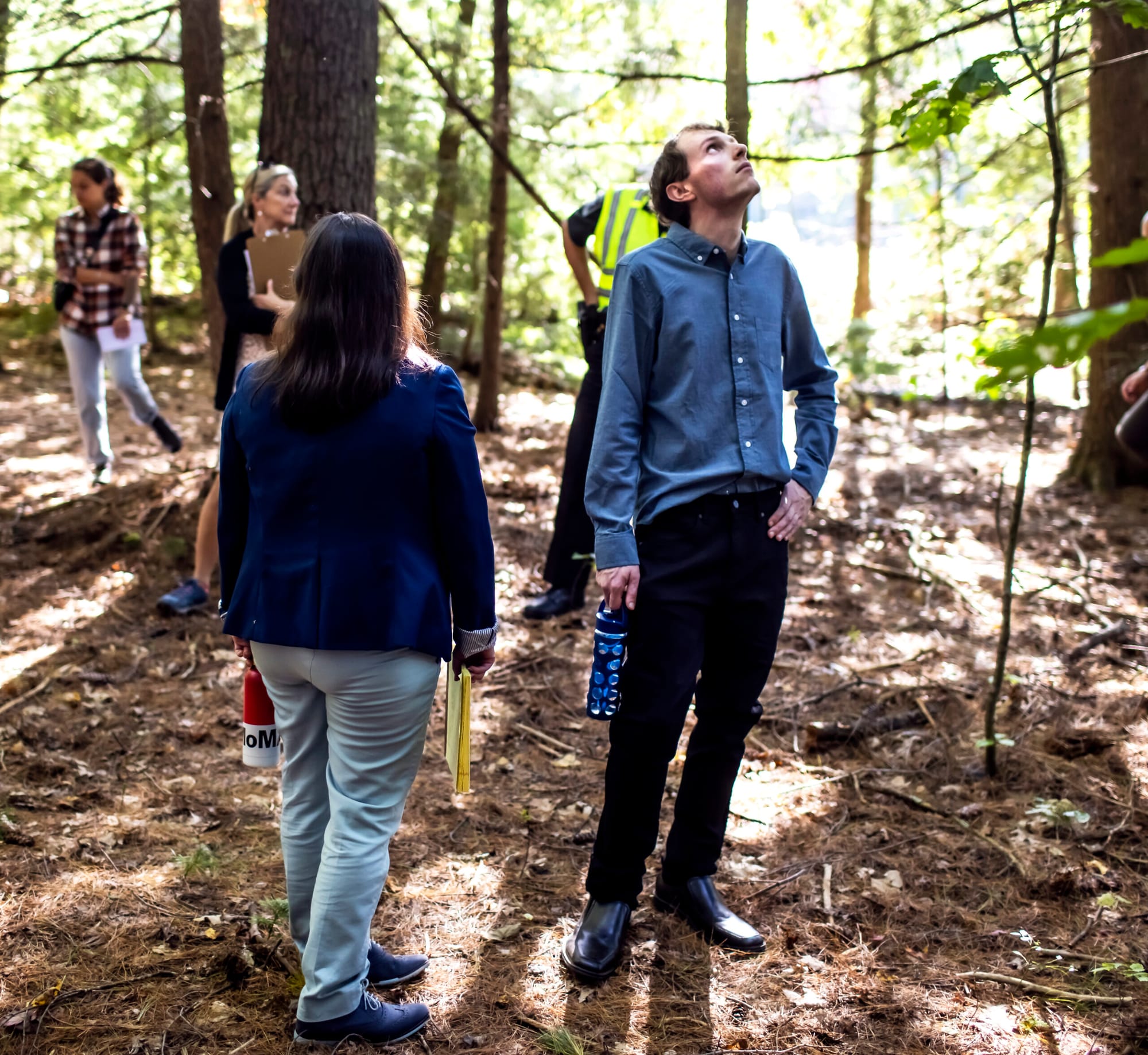
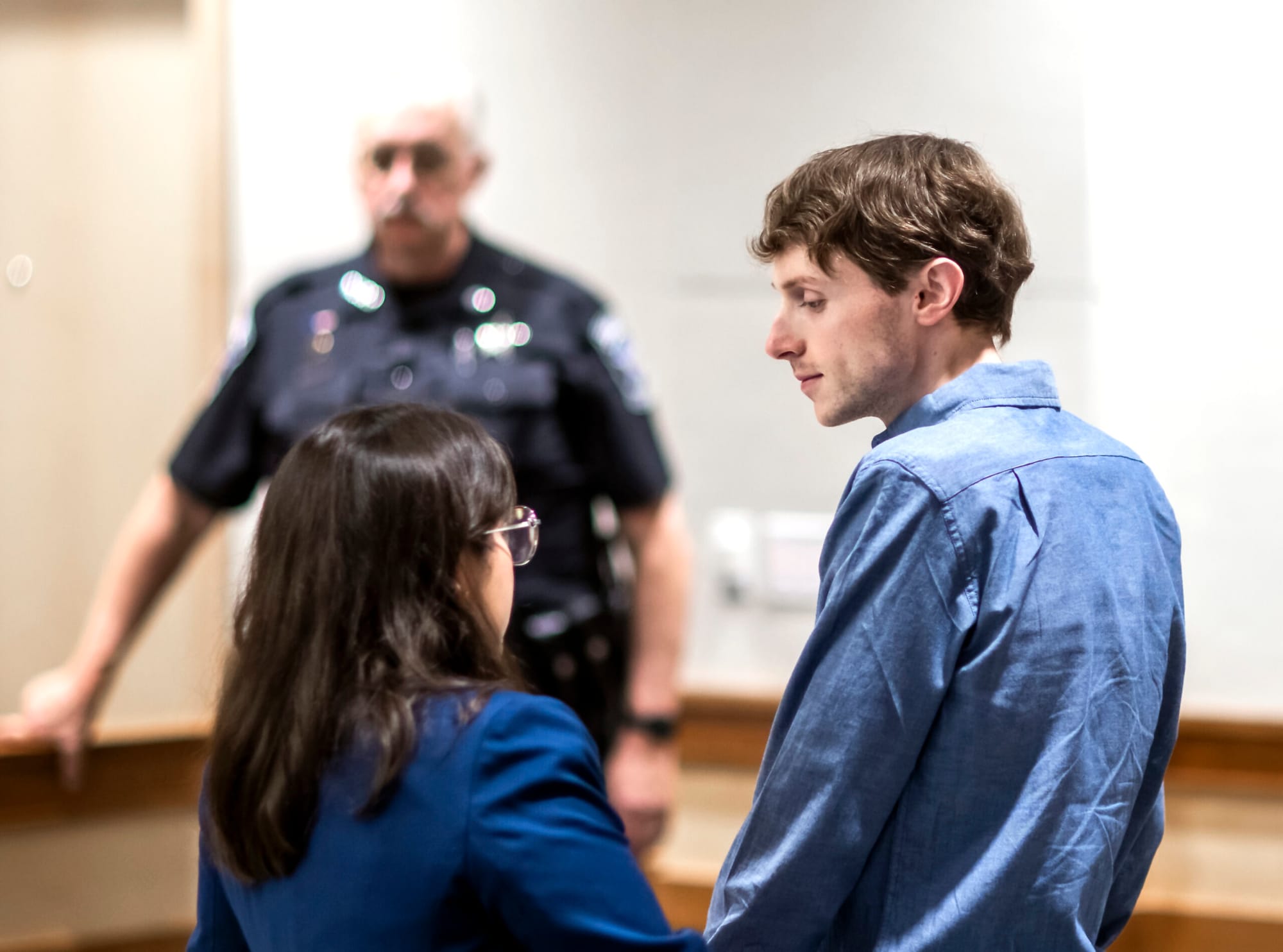
CONCORD, NH – Opening statements in Merrimack County Superior Court Tuesday highlighted the challenges for both prosecuting the double second-degree murder case against Logan Clegg as well as defending him.
Clegg, 27, is charged with killing Concord couple Djeswende and Stephen Reid, whose bodies were found hidden under brush off the Marsh Loop Trail in the Broken Ground Trail system in northeast Concord April 21, 2022, three days after they went for an afternoon walk near their Loudon Road apartment complex.
Witness testimony begins at 10 a.m. Wednesday in Merrimack County Superior Court with Judge John Kissinger presiding.
“After the defendant murdered Steve and Wendy, he tried to run and hide, and when he couldn’t run and hide anymore, he lied,” Assistant Attorney General Meghan Hagaman told jurors Tuesday.
Clegg, according to Hagaman, “is the one and only person” responsible for the Reids’ deaths.
She reminded jurors that the prosecution doesn’t have to prove motive, something she also stressed during the voir dire of Monday’s jury selection.
The state will have to convince jurors beyond a reasonable doubt that Clegg killed the Reids, who he had no connection to, with no clear motive as he walked back to his campsite in the woods after buying groceries.
But the defense has challenges, too, including battling evidence that ties Clegg to the area where the Reids were killed within minutes of the shooting, ballistics evidence they say ties his gun to the one used to kill them, lying to police about who he was when they encountered him while looking for the Reids, and his flight from Concord when the bodies were found.
Defense lawyer Caroline Smith acknowledged that Clegg lied to police and fled the area. She said, though, that police had already rousted him out of one tent site three days before the Reids were killed and when they encountered him at his new one while they were looking for the couple, he decided it was time to leave.
Clegg was wanted in Utah, where he’d skipped out on probation for felony burglary and larceny charges.
“He was not hiding from a murder, he was hiding from a probation violation in Utah,” she said.
A circumstantial case
Both sides say that the mountain of circumstantial evidence compiled by the Concord Police Department during the six months between when the Reids were killed and when Clegg was arrested supports their case.
On Monday during jury selection, Hagaman used a classic example to illustrate the difference between direct and circumstantial evidence.
She told jurors that if there is snow on the ground and you see it snowing, that’s direct evidence that it snowed. If there is no snow on the ground when you go to bed, but there is when you get up, that’s circumstantial evidence that it snowed overnight. The circumstance of snow on the ground leads to the conclusion that it snowed.
But Mariana Dominguez, representing Clegg, told jurors Monday there is a nuance to that example.
If you go to bed and there is no snow on the ground, but there is also snow-making equipment in the yard, was the snow that appeared overnight from the snow-making equipment or the sky?
The evidence that led to Clegg’s arrest is complicated, as outlined in a 27-page affidavit by the Concord Police Department. Some of the major elements include ballistics, eyewitness accounts and cell phone data. Clegg’s defense team has questioned the validity of some of the evidence, as well as police tactics after Clegg was arrested.
Hagaman, in her opening statement Tuesday, said the accumulation of evidence will prove Clegg killed the Reids.
Citing the aliases police said Clegg used – Arthur Kelly and Denton Kelly – she said, “In the end, it was the same person, Logan Clegg… the one and only person responsible for killing Stephen and Djeswende Reid.”
Smith reminded the jury that Clegg does not have to put on a defense to “prove” he’s innocent – it’s up to the state to prove beyond a reasonable doubt that he’s guilty.
She said that some of the state’s evidence will also be evidence that supports Clegg’s defense.
Focusing on ballistics evidence from shell casings found in the woods (some weeks and months after the shooting), and the bullets that killed the Reids, she said that investigators followed that path, and also followed the complicated path that led them to Clegg.
But the two paths “did not show Logan to be the shooter.”
What about the DNA?
One type of evidence Hagaman did not mention in the state’s opening statement was DNA.
The court in April approved spending nearly $90,000 on DNA testing. About $30,000 of that was the cost of the state’s testing. There was also the cost of it being observed by an expert hired by the defense.
In April, Assistant Attorney General Danielle Sakowski told Kissinger that the short timeline until the trial, which at the time was scheduled to begin in July, and the fact that available labs that could do the type of testing needed in the time needed were out of state also added to the cost.
At the time, there were 31 samples to be tested.
In June, Kissinger agreed to reschedule the trial to give the defense’s experts time to analyze the samples.
Smith Tuesday said that DNA testing was done in places on the Reids where their killer may have grabbed them to drag them off the trail to where their bodies were found.
She said there were results from three places, but the DNA didn’t match the Reids or Clegg.

Visiting the Scene
The jury, accompanied by court officials, Kissinger, the five attorneys, Clegg, law enforcement and the media, visited scenes related to the homicides on Tuesday afternoon.
Assistant Attorney General Ryan Olberding told jurors that the site view is “an opportunity to view evidence that we can’t bring into the courtroom.”
Smith told them that when someone testifies, jurors will be able to picture the area the witness or expert is talking about. She urged them to pay attention to the distances, terrain, sounds and feel of the scenes they were about to see.
Jurors were taken on a school bus to the parking lot of the Loudon Road Shaw’s, where Clegg had shopped shortly before the Reids are believed to have been killed. The bus circled the parking lot, allowing jurors to get a perspective on the lot and the route to the Alton Woods apartment complex across Loudon Road, where the Reids lived.
Jurors were then taken to the rear of the Alton Woods apartment complex, near where a trail leads under the Interstate 393 overpass and to the woods. That’s the route the Reids took the day they were shot.
The group of about three dozen ended the view with a hike on the Marsh Loop Trail, where the Reids were killed.
Kissinger instructed the jurors not to talk to each other or ask the attorneys questions during the site views. The Broken Ground Trail System was closed to the public during the visit during the trail walk, which took about 45 minutes.
Clegg, who was not shackled or in handcuffs, carried a water bottle on the unseasonably hot afternoon, and stayed close to Dominquez. He was trailed by two plain-clothes law enforcement officers.
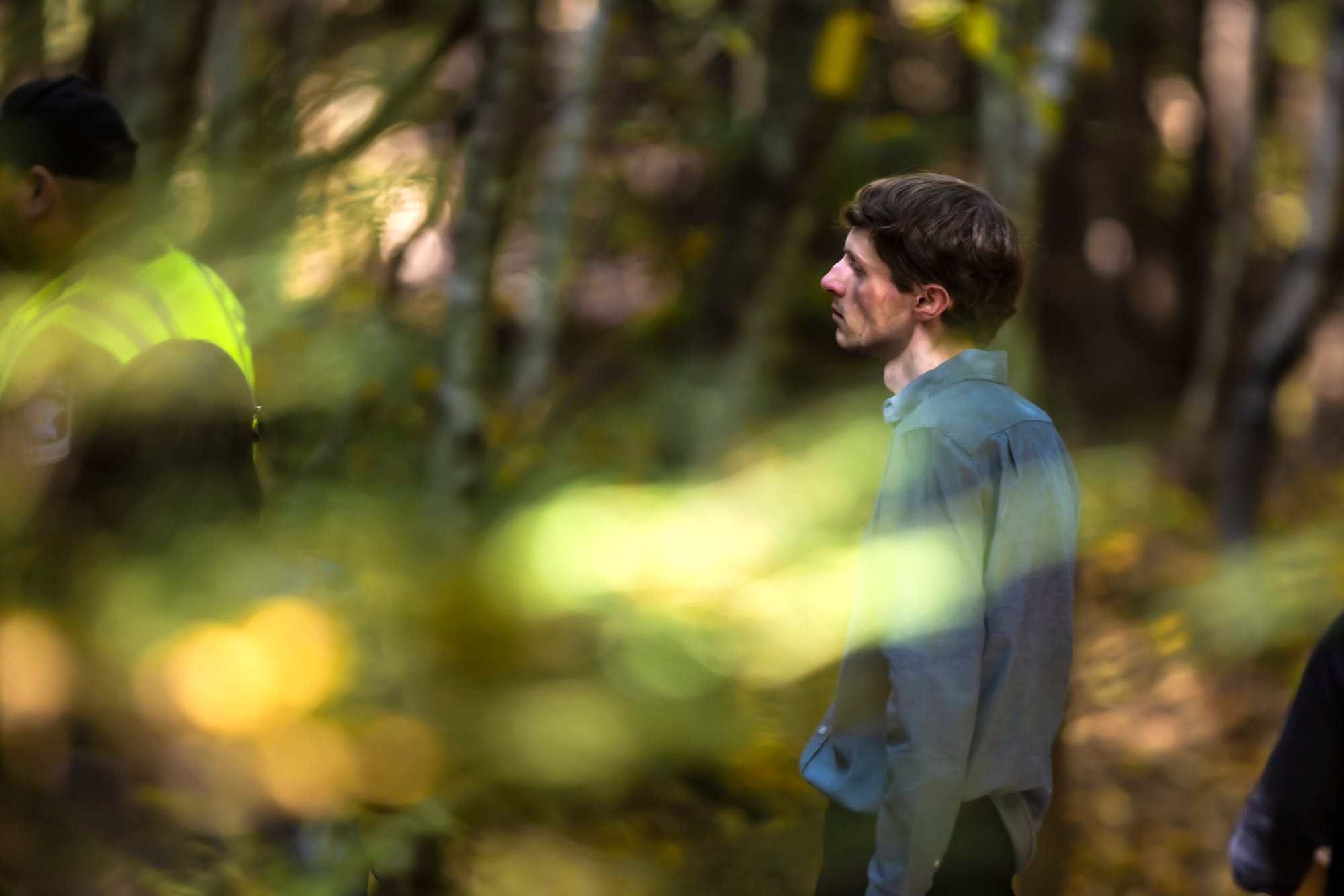
Law enforcement officers from the Merrimack County Sherriff’s Department accompanied the jury, frequently separating them from the half-dozen media members who attended.
Much of the walk was eerily quiet as the group hiked single-file along the dirt trail, which wound through the woods parallel to a large clearing for power lines. Some of the scene around the power lines has changed since the Reids were killed because of power-company work in the area, but the area in the woods where they were shot and hidden is the same.
Oberding pointed out landmarks including the tree where bullet casings were found, a tree stump that’s significant to witness testimony and the site where the Reids’ bodies were found covered in leaves and branches in a small natural depression.
As the group walked down a short incline to the site, snapping twigs and a songbird chirping nearby were the only sounds.
The jury also took a look at a nearby tree stump that is significant in witness testimony and Clegg’s former tent site, which he burned sometime between April 18 and April 22. About 150 small camping propane tanks, black with soot, as well as bullet casings, were found by investigators at the scene in the spring and summer of 2022.
Smith, at each scene, urged jurors to note what could be seen through the trees, the incline of the trail and the land on each side, the closeness to the power lines clearing, and other elements.
Clegg is charged with two counts of second-degree murder for “knowingly causing the death” of each of the Reids, two alternative second-degree murder charges for “recklessly causing” their deaths, three counts of falsifying physical evidence and one count of being a convicted felon in possession of a firearm. His indictment on those charges was announced Jan. 19. In May, an additional count of count of falsifying physical evidence (a Class B felony) was added.
He’s been held in Merrimack County Jail since he was extradited to New Hampshire following his arrest on a Utah fugitive warrant in South Burlington, Vermont, Oct. 12, 2022.
Prosecutors have listed 89 possible witnesses in the case, and the defense has listed 63. The trial is scheduled through Oct. 20.
Clegg is represented by Smith and Dominguez. The Office of the Attorney General is represented by Joshue Speicher, Hagaman and Olberding.


